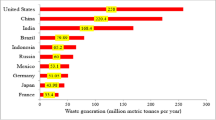Abstract
As an answer to the re-evaluation of the European sludge directive, two novel reference materials for organic components in municipal sludge have been produced and test certified for AOX (absorbable organic halogens), PAH (polycyclic aromatic hydrocarbons), NPE (nonylphenol and nonylphenolethoxylates), DEHP (di(2-ethylhexyl)phthalate), bisphenol A, and BFR (brominated flame retardants). The materials were prepared from raw sludge without spiking or mixing of different sludges. The study demonstrated that the technique for the preparation of a suitable reference material, sufficiently homogenous and stable, and with concentration levels that answer the needs of the laboratories and the relevant authorities, can now be presented in detail. The results, furthermore, show there is a need for method validation and standardisation of the measurements of NPEs and certain BFR congeners, and that the development of the laboratory structure in Europe, with fewer and more specialised laboratories, might become a major obstacle when trying to find a sufficient number of laboratories being appropriately proficient for this kind of study in the future.



Similar content being viewed by others
References
Council Directive 86/278/EEC of 12 June 1986 on the protection of the environment, and in particular of the soil, when sewage sludge is used in agriculture. OJ L 181, 1986: 6–12
EC/BCR GUIDELINES for feasibility studies on certified reference materials (2002) EUR 20574 EN
Van der Veen A, Nater D (1993) Sample preparation from bulk samples: an overview. Fuel Process Technol 36:1–7. doi:10.1016/0378-3820(93)90003-M
ASTM (1996) Designation. E :826–885. Standard practice for testing homogeneity of materials for development of reference materials.
Bonas G, Zervou M, Papaeoannou T, Lees M (2003) SoftCRM: a new software for the certification of reference materials. Accredit Qual Assur 8:101–107. doi:10.1007/s00769-003-0597-9
http://www.eie.gr/iopc/softcrm/ (15 March 2006)
Lamberty A, Schimmel H, Pauwels J (1998) The study of the stability of reference materials by isochronous measurements. Fresenius J Anal Chem 360:359–361. doi:10.1007/s002160050711
ISO Guide 35 (2006) Certification of reference materials—general and statistical principles. ISO, Geneva
Maier EA, Quevauviller P, Griepink B (1993) Interlaboratory studies as a tool for many purposes: proficiency testing, learning exercises, quality control and certification of matrix materials. Anal Chim Acta 283:590–599. doi:10.1016/0003-2670(93)85272-L
Final Technical Report, Sludgesupport (Feasibility study for Certified Reference Materials for organic components in municipal sludge), contract G6RD-CT-2002-00847
De Voogt P, Hinschberger J, Maier EA, Griepink B, Muntau H, Jacob J (1996) Improvements in the determination of eight polycyclic aromatic hydrocarbons through a stepwise interlaboratory study approach. Fresenius J Anal Chem 356:41–48
Becker R, Buge H-G, Nehls I (2007) The determination of adsorbable organically bound halogens (AOX) in soil–interlaboratory comparisons and reference materials. Accredit Qual Assur 12:647–651. doi:10.1007/s00769-007-0308-z
ISO 22032 (2006). Water quality—determination of selected polybrominated diphenyl ethers in sediment and sewage sludge—method using extraction and gas chromatography/mass spectrometry
ISO 18856 (2004). Water quality—determination of selected phthalates using gas chromatography/mass spectrometry
Acknowledgments
This work was conducted from 2003 until 2006, and was supported by the FP5 EU-GROWTH programme, contract G6RD-CT-2002-00847. The authors are solely responsible for the work and the work does not represent the opinion of the European Community. The European Community is not responsible for any use that might be made of the published data. The authors gratefully acknowledge the valuable contributions to the project by the project consortium members Oddvar Ringstad (Molab, Oslo, Norway, current address Dynea AS, Lillestrøm, Norway), Arne-Lund Kvernheim (Molab; current address Bryn Aarflot AS, Oslo, Norway), David Benanou and Dalel Benali (Anjou Recherche, Maisons-Laffitte, France), Heather Leslie and Stefan van Leeuwen (RIVO, IJmuiden, The Netherlands; current address Institute for Environmental Studies, VU University Amsterdam, Amsterdam, The Netherlands), Marja Lamoree (Institute for Environmental Studies, VU University Amsterdam, Amsterdam, The Netherlands), and Andreas Buchholz (Federal Institute of Materials Research and Testing (BAM), Berlin, Germany). The contribution to the characterisation by the following ring test participants is much appreciated: Dr. Oliver Gans (Federal Environmental Agency, Wien, Austria), Dr. Rudy van Cleuvenbergen (VITO Flemish Institute for Technological Research, Mol, Belgium), Dr. Felipe DeAlencastro (EPFL Swiss Federal Institute of Technology, Lausanne, Switzerland), Ing. Jiri Samsonek, PhD (ITC Institute for Testing and Certification, Zlín, Czech Republic), Dr. Klaus Sielex (North Rhine-Westphalia State Environment Agency, Essen, Germany), Dr. Norbert Litz (Federal Environmental Agency, Berlin, Germany), Dr. Pia Lassen (National Environmental Research Institute, Roskilde, Denmark) and Dr. Rakesh Kanda (WRC-NSF Ltd., Marlow, Bucks, United Kingdom).
Author information
Authors and Affiliations
Corresponding author
Rights and permissions
About this article
Cite this article
Krysell, M., Becker, R., Wegener, J.W. et al. Certified reference materials for organic contaminants in sewage sludge: a feasibility study. Accred Qual Assur 13, 553–562 (2008). https://doi.org/10.1007/s00769-008-0431-5
Received:
Accepted:
Published:
Issue Date:
DOI: https://doi.org/10.1007/s00769-008-0431-5




